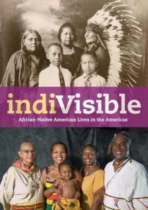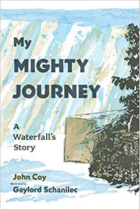All children have the right to learn about the world, to celebrate the water, air and sunshine, and to be curious about the animals and plants that live on our planet. All children also have the right to learn about endangered species, to be concerned about plastic in the ocean, and to understand what a changing climate means for our Earth. What can children do to help? Told from the perspective of a child, this colorful and vibrant book explores what it means to be a child who dreams of a beautiful future for their planet.
Information Book
Indivisible: African-Native American lives in the Americas

Throughout American history, people of combined African and Native American descent have often struggled for acceptance, not only from dominant cultures but also from their own communities. In this collection of twenty-seven groundbreaking essays, authors from across the Americas explore the complex personal histories and contemporary lives of people wth a dual heritage that has rarely received attention as part of the multicultural landscape.
Everything You Wanted To Know About Indians But Were Afraid To Ask
From the acclaimed Ojibwe author and professor Anton Treuer comes an essential book of questions and answers for Native and non-Native young readers alike. Ranging from “Why is there such a fuss about nonnative people wearing Indian costumes for Halloween?” to “Why is it called a ‘traditional Indian fry bread taco’?” to “What’s it like for natives who don’t look native?” to “Why are Indians so often imagined rather than understood?”, and beyond, Everything You Wanted to Know About Indians But Were Afraid to Ask (Young Readers Edition) does exactly what its title says for young readers, in a style consistently thoughtful, personal and engaging.
Nibi Is Water
A first conversation about the importance of Nibi, which means water in Anishinaabemowin (Ojibwe), and our role to thank, respect, love, and protect it. Babies and toddlers can follow Nibi as it rains and snows, splashes or rows, drips and sips.
My Mighty Journey:A Waterfall’s Story

My Mighty Journey is the story of the only major waterfall on the Mississippi River—and the changes it has witnessed over twelve thousand years. Written from the perspective of the waterfall, the narrative considers the people who lived nearby, the ways they lived, and how the area around the waterfall changed drastically in the past two centuries.
Plasticus Maritimus: An Invasive Species
Inspired by biologist AnaPêgo’s life’s work, and filled with engaging science and colorful photographs, this foundational look at plastic pollution in the ocean explains why it is such an urgent contemporary issue.
A Year Full Of Celebrations And Festivals
Countless different festivals are celebrated all over the world throughout the year. Some are national holidays, celebrated for religious and cultural reasons, or to mark an important date in history, while others are just for fun. Give thanks and tuck into a delicious meal with friends and family at Thanksgiving, get caught up in a messy tomato fight in Spain at La Tomatina, add a splash of color to your day at the Holi festival of colors and celebrate the life and achievements of Martin Luther King Jr. on Martin Luther King Jr. Day.
Sugar Comes From Arabic: A Beginner’s Guide to Arabic Letters and Words
This book presents clear directions for learning and writing Arabic letters, in large, bright red shapes with step-by-step instruction on how to draw each one. The Arabic letters are introduced in the order of the English alphabet, the script goes from right to left, and illustrations show how to connect the letters in a word. In addition, there are colorful illustrations and stories about products that have origins in the Arab World.
Part of the Middle East and South Asia/Arabic Language and Culture Kit
IQRA’ Arabic Reader Textbook Level 1
This book is designed as a beginning program for teaching Arabic as a second language. Included are lessons dealing with basic conversational Arabic, reading, vocabulary, linguistic structures, spelling, and diction. Dual-language: English and Arabic. There are several books in this series.
Part of the Middle East and South Asia/Arabic Language and Culture Kit
Genius of Islam: How Muslims Made the Modern World
The Muslim world has often been a bridge between East and West, but many of Islam’s crucial innovations are hidden within the folds of history.
Part of the Middle East and South Asia/Arabic Language and Culture Kit
